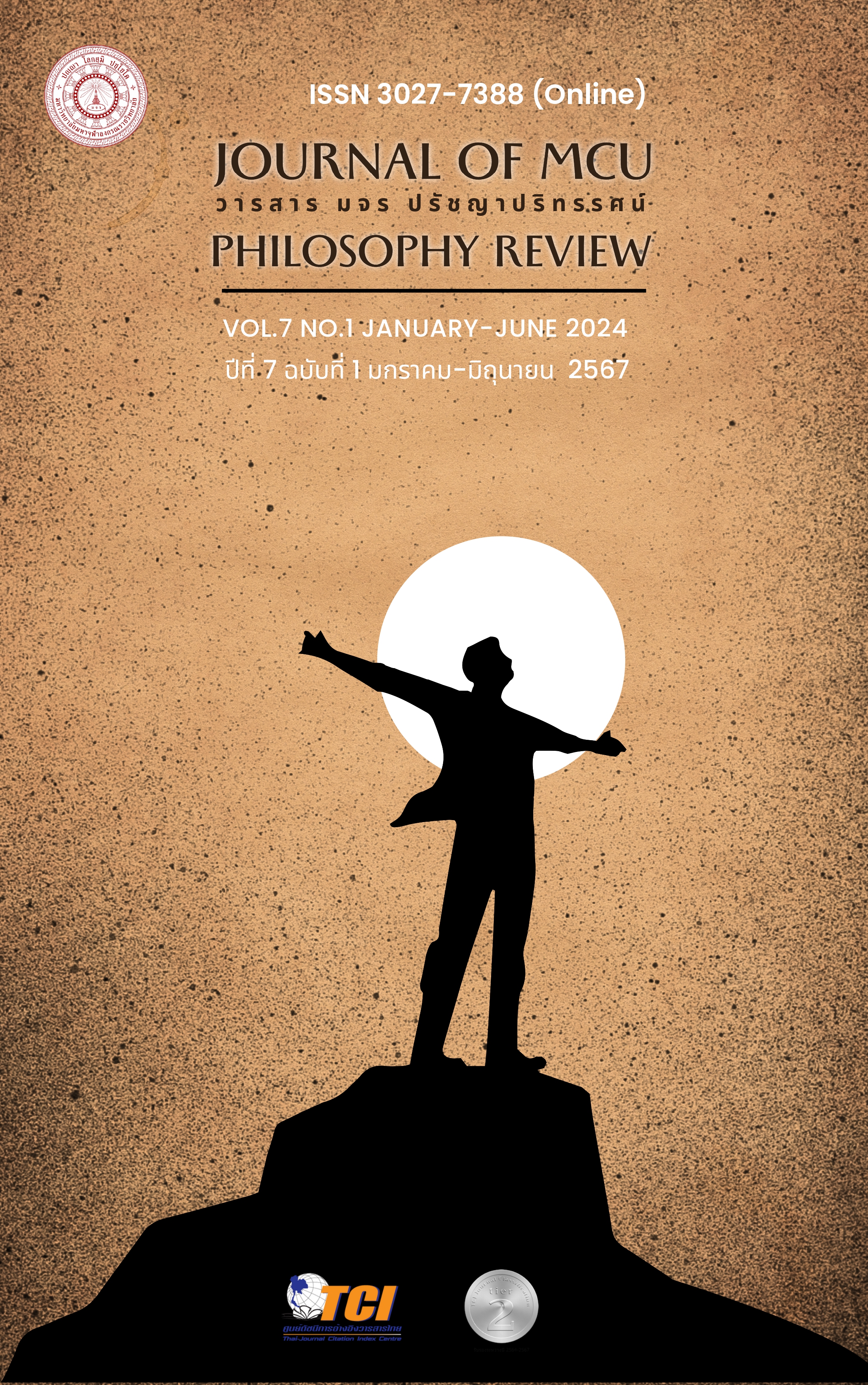The Route of Buddhism Propagation in Dvaravati Civilization
Main Article Content
Abstract
This Article aimed to study: 1) To study the path of the propagation of Buddhism in the Dvaravati civilization. 2) To synthesize information on the study of the path of the propagation of Buddhism in the Dvaravati civilization. 3) To present the results of the study of the path of the propagation of Buddhism in the Dvaravati civilization. This research is qualitative research, using methods of conducting research through surveys, interviews, subgroup seminars, and knowledge exchange activities. with specialized informants from the provinces of Suphan Buri, Kanchanaburi, Nakhon Pathom, and Ratchaburi. The research findings reveal that; The dissemination routes of Buddhism in the Dvaravati culture can be traced along communities located on the global trade route between China and India, with rivers such as the Mae Klong River, Tawin River, Maenam Jorakhae Samphan, Thawa River, and Tha Chin River serving as main routes for trade contact and the dissemination of Buddhism to indigenous people. Thailand has only recently begun studying the traces of the Dvaravati culture for about 140 years. The community of Ban Don Ta Phet is considered a significant historical cradle, transmitting its heritage to the ancient city of U Thong. It represents the development of Dvaravati culture along with the influx of language, arts, culture, Buddhism, and trade networks linking the exchange of goods, with Khu Bua being a significant port town with transportation through rivers such as the Mae Klong River, Tawin River, Thawa River, and Tha Chin River. The evidence of the movement of Buddhism in the Dvaravati culture can be presented through the dissemination routes of Buddhism in the Dvaravati culture, divided into the pre-Dvaravati era, early Dvaravati era, middle Dvaravati era, and late Dvaravati era, following the model of dissemination routes of Buddhism in the Dvaravati culture, and disseminated to ongoing learning organizations.
Article Details

This work is licensed under a Creative Commons Attribution-NonCommercial-NoDerivatives 4.0 International License.
บทความที่ได้รับการตีพิมพ์เป็นลิขสิทธิ์ของวารสาร มจร ปรัชญาปริทรรศน์
ข้อความในบทความที่ได้รับการตีพิมพ์ในวารสาร ถือเป็นความรับผิดชอบของผู้เขียนบทความ และข้อคิดเห็นนั้นไม่ถือว่าเป็นทัศนะและความรับผิดชอบของกองบรรณาธิการวารสาร มจร ปรัชญาปริทรรศน์
References
กรมพระยาดำรงราชานุภาพ. (2510). ตำนานพระพุทธเจดีย์. พิมพ์ครั้งที่ 6. กรุงเทพมหานคร: ศิวพร.
ทักษิณ อินทโยธา. (2534). ใครคือเจ้าถิ่นลุ่มน้ำเจ้าพระยาและด้ามขวานทองเมื่อ 2,000-3,000 ปี ก่อน. กรุงเทพมหานคร : ด่านสุทธาการพิมพ์.
ธนิก เลิศชาญฤทธิ์. (2554). การจัดการทรัพยากรวัฒนธรรม. กรุงเทพมหานคร : ศูนย์มานุษยวิทยาสิริธร (องค์กรมหาชน).
ธิดา สาระยา. (2532). (ศรี) ทวารวดี : ประวัติศาสตร์ยุคต้นของสยามประเทศ. พิมพ์ครั้งที่ 3. กรุงเทพมหานคร: เมืองโบราณ.
บัญชา พงษ์พานิช และคณะ. (2559). จากอินเดียถึงไทย : รอยทางพระพุทธศาสนาแรกๆ. กรุงเทพมหานคร: มหาวิทยาลัยมหาจุฬาลงกรณราชวิทยาลัย.
ผาสุข อินทราวุธ. (2542). ทวารวดี : การศึกษาเชิงวิเคราะห์จากหลักฐานทางโบราณคดี. กรุงเทพมหานคร : โรงพิมพ์อักษรสมัย.
พระธรรมปิฎก (ป.อ.ปยุตฺโต). (2547). จาริกบุญ–จารึกธรรม. กรุงเทพมหานคร : สหธรรมิก.
วิฑูรย์ ตั้งเจริญ. (2552). วิสัยทัศน์ศิลปวัฒนธรรม. กรุงเทพมหานคร : มหาวิทยาลัยศรีนครินทรวิโรฒ.
วิยะดา ทองมิตร. (2563). คูบัว ...เมืองท่าแห่งลุ่มน้ำแม่กลอง. วารสาร เมืองโบราณ, 46(3), หน้า 16-26
ศักดิ์ชัย สายสิงห์. (2562). ศิลปะทวารวดีวัฒนธรรมพุทธศาสนายุคแรกเริ่มในดินแดนไทย. กรุงเทพมหานคร : มหาวิทยาลัยศิลปากร.
ศรีศักร วัลลิโภดม. (2549). ประวัติศาสตร์ โบราณคดี : เมืองอู่ทอง. กรุงเทพมหานคร : เมืองโบราณ.
สุจิตต์ วงศ์เทศ. (2548). คนไทยมาจากไหน. กรุงเทพมหานคร : สํานักพิมพ์มติชน.
เสถียร โพธินันทะ. (2515). ภูมิประวัติพระพุทธศาสนา. กรุงเทพมหานคร : บรรณาคาร.


